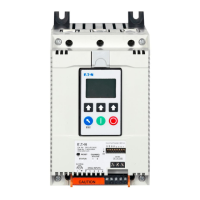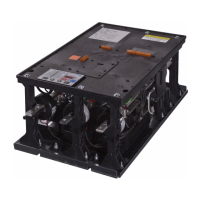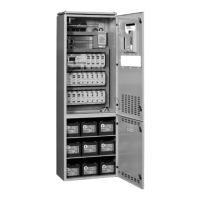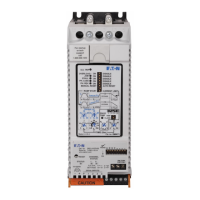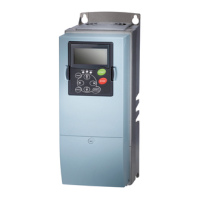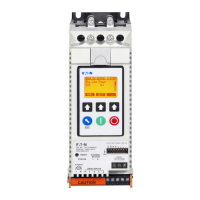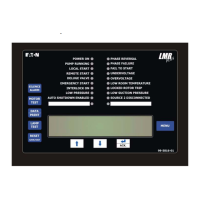SC300 Handbook
96
Copyright © 2007-2018 Eaton Corporation. All Rights Reserved.
IPN 997-00012-03 B2 Issue B2 July 2018
Fan Controller
The SC300 can manage one FC100 Fan Controller module.
The FC100 can control up to 8 fans, with one or two independent proportional control modules.
For more information, see FC100 Fan Controller Install and Operation, available from Eaton.
The SC300 provides these features when used with the FC100:
• Configure primary and secondary control profiles for controller 1 and Controller 2.
• Set fan controller mode.
• Switch from primary to Secondary control profiles by Smart Alarm control
• Manual speed control over-ride.
• View temperature inputs
• View fan speeds
• Report fan controller alarms and values remotely.
► To connect a Fan Controller
The FC100 fan controller is an RXP device and must be registered with the SC300 before it will
communicate with it.
1 Connect the FC100 communications port (RJ-45) to the RXP bus using an RJ-45 patch cable..
Generally there will be a spare RXP connection on the VFN board.
2 In web, go to System > Interfaces > RXP.
3 In DCTools, go to Configuration > RXP.
4 The RXP Devices table should show the FC100.
5 Copy the FC100 serial number into the next available position in the IO Board to Serial
Number Mapping table.
6 Click on Apply Changes.
► To configure a Control Profile
The control profile specifies how fan control power percentage (and hence speed) varies with
temperature.
It consists of six temperature / power settings. The FC100 will smoothly increase fan speed as
temperature increases from one point to the next.
The control profile will be pre-determined according to the enclosure and fan characteristics.
Unauthorized changes could cause over-heating.
7 Select the required profile to enter.
Generally this will be Controller 1, Primary Profile.
8 Enter and apply values for all six temperature / power pairs.
► To set fan controller mode
Set Mode to any of these values:
Single Controller
All fans are driven from temperature sensor 1 and controller 1 profile.
Dual Controller
Temperature sensor 1 drives both controllers with their own profiles.
Independent Controller
The two controllers work independently with their own temperature sensors.
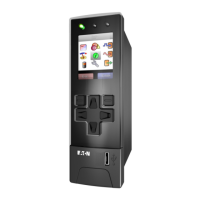
